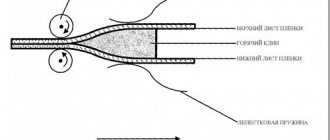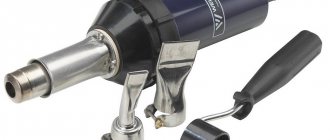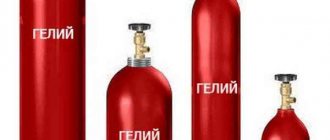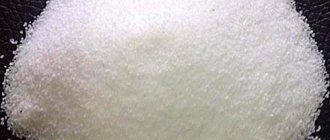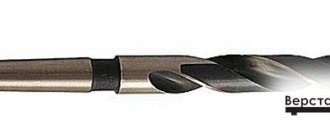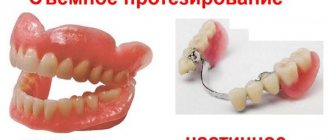Features of applying an oxide film to metals
The essence of oxidation technology is the forced oxidation of the metal surface. The product or material is immersed in an oxidizing agent, after which a thin film is formed on it. The composition of the oxidizing agent is determined by the type of metal being processed. Next, I will try to answer the questions that are most often asked by beginners in metalworking.
Purpose methods, implementation features
What is the purpose of oxidation?
- Give the product good decorative properties.
- Protect it from mechanical damage.
- Increase the corrosion resistance of metal.
- Paint the surface in a certain shade.
What metals can be oxidized? Almost any. These are stainless steel, cast iron, aluminum, brass, copper, bronze and silver, nickel and zinc. Each metal has its own “recipe” for painting mixture. Depending on the metal, not only the composition changes, but also the duration of processing and temperature conditions.
There is a strict sequence of actions listed below:
- Mechanical pre-treatment.
- Degreasing the surface with organic solvents. A sign of high-quality removal of the smallest contaminants is the uniform wettability of the product with water.
- Minor etching of the surface of a part or product, the so-called pickling. This allows you to remove any remaining oxides.
- Activation by immersion for a maximum of 3 minutes in a solution with a temperature of +18 to +30 degrees Celsius.
- Direct oxidation and subsequent compaction.
After each stage, the workpiece is washed in a bath with a bottom feed and top drain. Each stage of oxidation can have its own specifics, which are determined by the type of metal.
What is oxidation?
The technology is implemented by thermal, chemical, electrochemical and plasma methods. The choice of one method or another is determined by the purpose of applying the oxide film and the type of surface.
For example, if you need to get a beautiful decorative coating, you should use the thermal method. The electrochemical method (anodizing) is most often used for aluminum and its alloys. The plasma method makes it possible to obtain a coating that has protective and decorative properties in equal measure. It is most often used when working with parts with complex reliefs.
Video Electrochemical oxidation of metal at home
Oxide and phosphate protective films
⇐ PreviousPage 21 of 25Next ⇒Steel oxidation
Natural oxide films form on the surface of metals under the influence of atmospheric oxygen. Such films have insignificant thickness and therefore cannot serve as reliable protection against corrosion.
Oxide films of great thickness can be obtained artificially. Such films can protect against corrosion. Oxidation can be carried out by steam-thermal, chemical and electrochemical methods.
Oxidation of ferrous metals has found wide application in industry for protection against atmospheric corrosion. An oxide film on steel can be obtained by electrochemical oxidation in electrolytes, by chemical treatment in acidic or alkaline oxidizing solutions, and also by heating in an atmosphere of water vapor. Chemical methods of alkaline and steam-thermal oxidation of steel are most widely used in industry.
Steam-thermal oxidation is carried out in a stream of superheated water vapor at a temperature of 600°C. In this case, the formed oxide film consists mainly of pure magnetite Fe3O4.
Alkaline oxidation is carried out in an alkaline nitrite-nitrate solution of the composition (g/l):
sodium hydroxide - 700; sodium nitrite - 200; sodium nitrate - 50.
Oxidation of parts is carried out at a temperature of 136-142°C for 0.5-1.0 hours, after which degreasing and etching of the surface are carried out first.
In a sodium hydroxide solution at a sufficiently high temperature, iron on the surface dissolves with the release of hydrogen and the formation of hypoferrite anions:
| 2– |
Fe + 2OH– = FeO2 + H2. In the presence of oxidizing agents NO – and NO –
– 2–
ferrites are also formed
–
FeO2 anions. In the presence of FeO2 anions
Fe2+ and Fe3+ cations are also present:
and FeO2 in alkaline solution
| – 3+ – |
| 2– 2+ – |
FeO2 + 2H2O = Fe + 4OH;
FeO2 + 2H2O = Fe + 4OH. At a sufficiently high concentration of Fe2+ and Fe3+, an oxide film is formed, consisting mainly of magnetite Fe3O4.
After oxidation, the products are thoroughly washed with hot water to remove traces of alkali, treated in a soap solution for passivation, dried and immersed in a bath with machine or vaseline oil, heated to better fill the pores to 100………-150°C…… .
Oxidation of aluminum and its alloys
Oxidation of aluminum and its alloys is carried out by chemical or electrochemical methods.
As a result of chemical oxidation, low-strength films with a thickness of 1-2 microns are obtained, so this process is not widely used in industry.
Electrochemical oxidation of aluminum and its alloys (anodizing) is used to protect products from corrosion, for decorative finishing, imparting electrical insulating properties, and also for preparation for painting. Anodization is carried out in sulfuric acid, chromic acid and oxalic acid electrolytes. Anodization in oxalic acid is used to obtain an oxide film with electrical insulating properties. Anodizing in sulfuric acid with a concentration of 200 g/l has found wide use in industry. The process is carried out at
anode current density 80-250 A/m2, room temperature for 0.5 hours. The products are hung on an anode rod, and sheet lead serves as the cathode.
To increase the protective properties, the oxide film is filled with chromium compounds by treating it in a solution containing 100 g/l potassium chromate and 18 g/l potassium carbonate for 0.1-0.2 hours at a temperature of 90-95° With subsequent washing in water and drying.
To improve the quality of finishing of products, coloring of oxide films with inorganic compounds or organic dyes is used. For example, to obtain a blue color (Prussian blue), a product with an oxide film is treated in a solution of potassium hexacyanoferrate (II) (10-15 g/l) for 0.1-0.2 hours, then in a solution of iron (III) chloride. For gold coloring, use a solution containing 1.0 g/l orange dye, 0.1 g/l yellow and 0.1 g/l black (acidic). Coloring is carried out at a temperature of 20°C. Inorganic compounds provide more light-resistant colors than organic ones, but when using organic dyes, a greater number of colors and shades can be obtained.
Phosphating steel
Phosphating is the process of obtaining a film of phosphate salts of iron and manganese on the surface of steel. The thickness of the film, depending on the conditions of its production, ranges from 5 to
15 microns. Color black or light grey.
Phosphate film has high dielectric properties, is resistant to kerosene, lubricating oils, heat-resistant and frost-resistant.
The mechanism for protecting iron with a phosphate film comes down to mechanical shielding, i.e., isolating the surface of the iron from the external corrosive environment. Due to the porosity of phosphate films, their protective effect is insufficient, so they are mainly used as a primer for painting.
To increase the protective properties of the phosphate film, it is treated with a passivating chromate solution containing 60-80 g/l sodium or potassium chromate at a temperature of 70-80°C for 10-15 s or impregnated with lubricating oils at a temperature of 100-120°C.
The starting salt for phosphating is the preparation “mazhef” (short for manganese-iron-phosphate), which consists of iron dihydrogen orthophosphates Fe(H2PO4)2 and manganese Mn(H2PO4)2.
In a solution of dihydroorthophosphates, cations of these metals and anions are formed as a result of dissociation:
Me(H2PO4)2 = Me2+ + 2(H2PO4)-; (H2PO4)-= H+ + (HPO4)2-; (HPO4)2-= H+ + (PO4)3-.
Salts of di- and tri-substituted manganese and iron phosphates are poorly soluble, therefore, in the process of dissociation of the “mazhef” salt in the layer bordering the surface of the product, a supersaturated solution of these salts is formed, from which the phosphate coating crystallizes on the surface of the iron according to the reactions:
| 3- |
Me2+ + (HPO4)2-= MeHPO4¯;
3Me2+ + 2PO4 = Me3(PO4)2¯, where Me is iron or manganese.
Phosphating is carried out in a solution containing 30 g/l of the drug
"mazhef" at a temperature of 90-98°C.
The process of obtaining a phosphate coating on the surface of steel products can be intensified by adding oxidizing agents (sodium nitrate), solutions of metal salts that are more noble than those being phosphated (for example, copper oxide) to the phosphating solution. For accelerated phosphating, we can recommend a solution containing 30 g/l of the Majef preparation and 0.3 g/l of copper oxide.
Enamel coatings
The enamel is a glassy mass, heat-resistant, stable in all organic and mineral acids, with the exception of hydrofluoric acid and its salts. This type of coating is common in the production of devices for the chemical industry and household products.
Enamel consists of glass-forming and auxiliary components. Glass-forming materials are silicon dioxide in the form of quartzite or river sand, boric anhydride, oxides of lead, zinc, and aluminum. Auxiliary materials include: oxidizing agents (sodium or potassium nitrates, manganese oxide), oxides that promote better adhesion of enamel to metal (sodium and nickel oxides), opacifiers (calcium fluoride, cryolite), coloring agents that render the enamel opaque (cadmium sulfide , oxides of calcium, aluminum, chromium, etc.).
The high chemical resistance of enamels is due to the presence of borax and silica; heat resistance is ensured by the proximity of the temperature coefficients of linear expansion of the coating and the metal.
In chemically aggressive environments, coatings with acid-resistant enamel containing up to 60% silicon dioxide or alkali-resistant enamel containing 50………-60% titanium dioxide are used.
The table shows the approximate composition of acid-resistant enamel.
| Name of components | Content, % | Name of components | Content, % |
| SiO2 | 67,0 | K2O | 4,0 |
| Al2O3 | 9,3 | B2O3 | 2,1 |
| Na2O | 10,2 | BaO | 2,0 |
| CaO | 5,1 | MgO | 0,3 |
The enamel suspension is applied to the cleaned surface of the product by immersion in the melt or spraying. Then the coating is dried and the enamel layer is fired in muffle or electric furnaces at a temperature of 880-1050°C.
⇐ Previous21Next ⇒
What will happen to the Earth if its axis shifts by 6666 km? What will happen to the Earth? - I asked myself...
Conflicts in family life. How can I change this? It is rare that a marriage and relationship exists without conflict and tension. Everyone goes through this...
WHAT IS CONFIDENT BEHAVIOR IN INTERPERSONAL RELATIONSHIPS? Historically, there are three main patterns of differences that exist between...
What does the IS operation and maintenance department do? Responsible for the safety of data (copying schedules, copying, etc.)…
Didn't find what you were looking for? Use Google search on the site:
Properties of oxide films
The properties of anodic oxide films are mainly determined by their structure and phase composition, i.e. structure. Observations using a conventional optical microscope revealed that the thickened films are porous and have a fibrous structure. Depending on the composition of the electrolyte used, the pore diameter can vary within several hundred angstroms, and their number can reach up to 108 per square centimeter of the film surface.
The use of an electron microscope made it possible to construct an idealized model of the structure of a porous oxide film. Keller and a number of followers, based on the surface relief of the metal from which the film was removed, established that the oxide consists of hexagonal cells shaped like faceted pencils, tightly pressed to each other. If the leads of these “pencils” are removed, pores are formed, which are filled with electrolyte during the formation of the oxide. The idealized structure according to Keller is currently accepted as the basis and is given in all monographs.
Establishing the phase composition was made possible through the use of electron and x-ray diffraction methods, as well as infrared spectroscopy. It was found that the anodic oxide film can be amorphous or crystalline, and sometimes contain both phases. It was also discovered that the porosity of the crystalline anodic oxide can be two orders of magnitude higher than the porosity of the film.
The ability of oxide films to protect metal from environmental was discovered immediately after the discovery of the anodizing process. Anodic oxidation of metals has become one of the methods of corrosion protection in mechanical engineering and the electronics industry. Initially, only thin, dense films were used for corrosion protection. Currently, porous coatings are also used on steel, since after compaction and filling they not only increase their corrosion-protective properties, but also acquire a decorative appearance.
To assess corrosion resistance, accelerated testing with the VIAM sample, developed at the All-Union Institute of Aviation Engineering (hence its name), is often used. In this case, a drop of the sample is applied to the anodized surface being tested and the time during which it eats away the film to the metal is measured. The result is detected by a change in the color of the drop when the reaction of the sample with the metal begins.
Electrophysical include resistance to electric current, dielectric constant, dielectric loss tangent and dielectric strength. They have been studied quite well and are reflected in almost all monographs devoted to anodic coatings.
The use of oxide films as insulation is due to their high resistance to electric current and high mechanical strength. The main advantage of oxide insulation is that it retains its properties at elevated temperatures. Electric strength, i.e. The breakdown voltage at a given thickness for different films depends on many factors. The denser the film, the higher its electrical strength. Even porous films have an electrical strength that is an order of magnitude higher than that of air.
The presence of pores in the oxide film leads to the fact that its effective dielectric constant can vary within wide limits when the properties of the environment change. This effect, associated with the condensation of water vapor in the pores of the film, is used to create humidity sensors.
In terms of their mechanical properties, anodic oxide films belong to the category of substances of high hardness. Aluminum oxide films are especially hard. Usually, to assess the mechanical strength of an oxide film, its microhardness is measured on transverse sections. Using the PMT-3 device at low loads (usually 50 gs), it was established that the hardness of the porous film gradually decreases with distance from the metal to the oxide surface. In addition to microhardness, mechanical strength is assessed by abrasion resistance to information loads. Wear resistance research is carried out on the working surfaces of parts used in friction pairs. Good results have been obtained when anodizing gears made of aluminum alloys. When anodizing, not only an increase in strength is observed, but also an improvement in anti-friction properties, since the oxide layer is easily polished and becomes smooth and hard.
